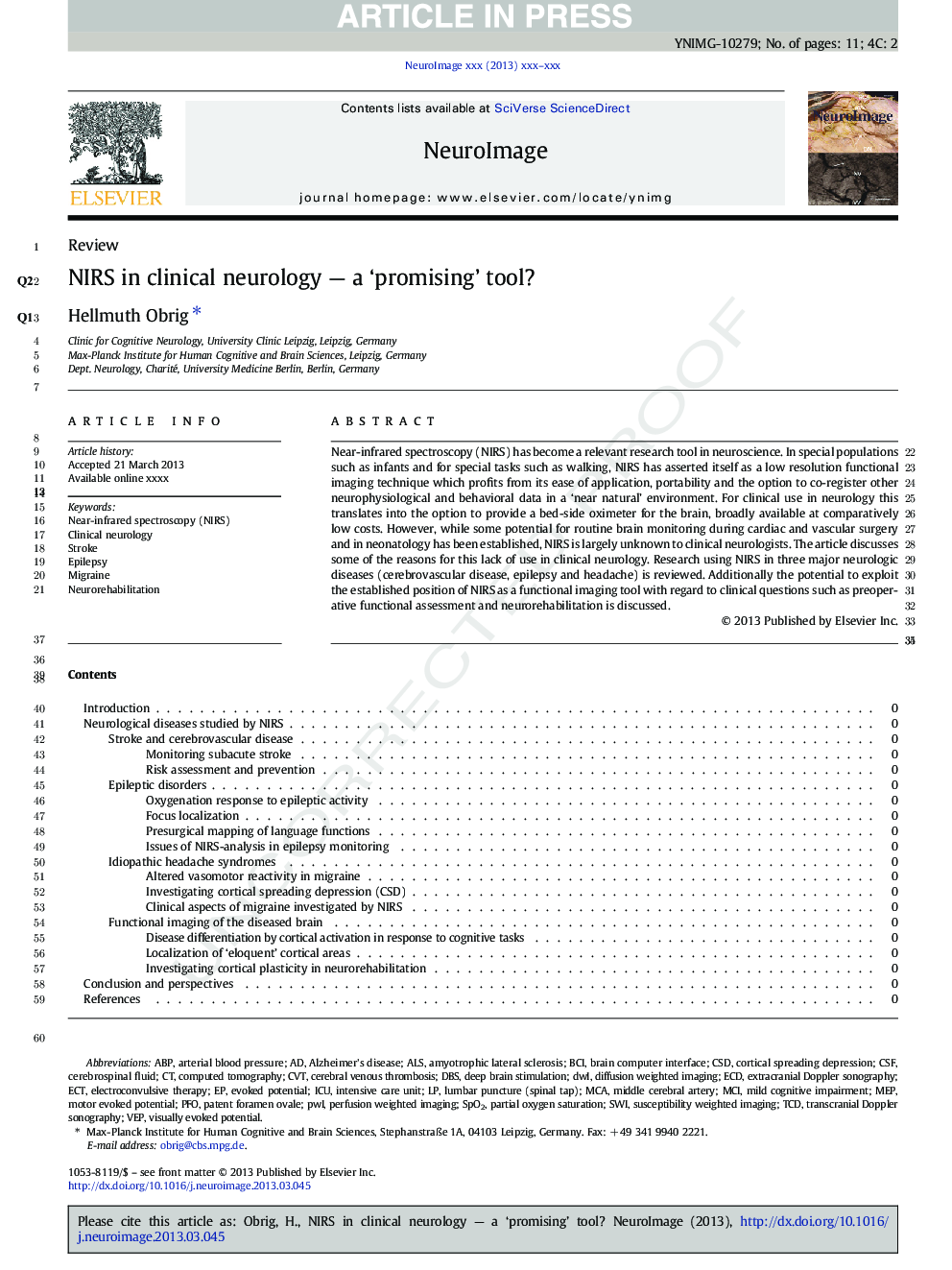| Article ID | Journal | Published Year | Pages | File Type |
|---|---|---|---|---|
| 6028862 | NeuroImage | 2014 | 11 Pages |
Abstract
Near-infrared spectroscopy (NIRS) has become a relevant research tool in neuroscience. In special populations such as infants and for special tasks such as walking, NIRS has asserted itself as a low resolution functional imaging technique which profits from its ease of application, portability and the option to co-register other neurophysiological and behavioral data in a 'near natural' environment. For clinical use in neurology this translates into the option to provide a bed-side oximeter for the brain, broadly available at comparatively low costs. However, while some potential for routine brain monitoring during cardiac and vascular surgery and in neonatology has been established, NIRS is largely unknown to clinical neurologists. The article discusses some of the reasons for this lack of use in clinical neurology. Research using NIRS in three major neurologic diseases (cerebrovascular disease, epilepsy and headache) is reviewed. Additionally the potential to exploit the established position of NIRS as a functional imaging tool with regard to clinical questions such as preoperative functional assessment and neurorehabilitation is discussed.
Keywords
DBSPFOPWINeurorehabilitationSpO2VEPCVTABPBCICSDDWISWIMCAECDECTMEPTCDmild cognitive impairmentamyotrophic lateral sclerosiscortical spreading depressionevoked potentialICUintensive care unitPatent foramen ovaleAlzheimer's diseaseALSEpilepsydeep brain stimulationCerebral venous thrombosisDiffusion weighted imagingSusceptibility weighted imagingPerfusion weighted imagingcomputed tomographyElectroconvulsive therapyBrain computer interfaceTranscranial Doppler sonographyStrokemiddle cerebral arteryNear-infrared spectroscopy (NIRS)Arterial blood pressureCSFCerebrospinal fluidClinical neurologyMotor evoked potentialMigraineMCIvisually evoked potential
Related Topics
Life Sciences
Neuroscience
Cognitive Neuroscience
Authors
Hellmuth Obrig,
